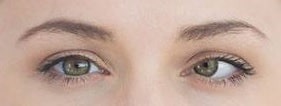Lazy Eye, Amblyopia
Lazy Eye, Amblyopia
Lazy eye or amblyopia is a condition of reduced vision in an eye usually unilateral. Mainly caused by disturbed visual development early in life. The affected eye often wanders inward or outward. This condition usually develops early in life upto 7 years of age. It is the most prevalent cause of reduced vision in children.
Symptoms
Signs and symptoms of lazy eye include:
- Inward or outward displaced eye
- Eye don’t work together
- Tilting of head
- Poor depth perception
- Abnormal visual screening test results
- Sometimes amblyopia is not evident without eye examination.
- Squinting of an eye
Causes
This condition occur early in life because of impaired development of visual pathway from retina to the brain. This leads to the weak signals to an affected eye and ultimately reduced function. Common causes of this condition include:
- Imbalance of extraocular muscles
- Refractive errors of eye or astigmatism
- Deprivation amblyopia due to problem in one eye such as cataract which leads to reduce vision in that eye.
Complications
Major complication of lazy eye is that if it’s left untreated it can lead to permanent vision loss.
Diagnosis
Diagnosis of lazy eye is done by detailed medical history and general physical examination of the patient. Along with this ocular examination; for eye health, eye movements, wandering of eye, refractive errors. Eye drops are given before performing eye examination as it dilates the pupil for examination. Some tests for refractive error are through picture chart. In preverbal children a lighted magnifying device can be used to detect cataracts.
Treatment
Treatment options include:
- Using corrective eyewear.
- Eye patches to stimulate weaker eye
- Bangerter filter placed on the eyeglass lens of stronger eye.
- Eye drops such as atropine on stronger eye which weakens it’s vision and stimulate weaker eye.
- Sometimes surgery is needed if child has dropping eye lid because of cataract or other underlying condition.
- Activity-based-treatment such as with drawing etc.
